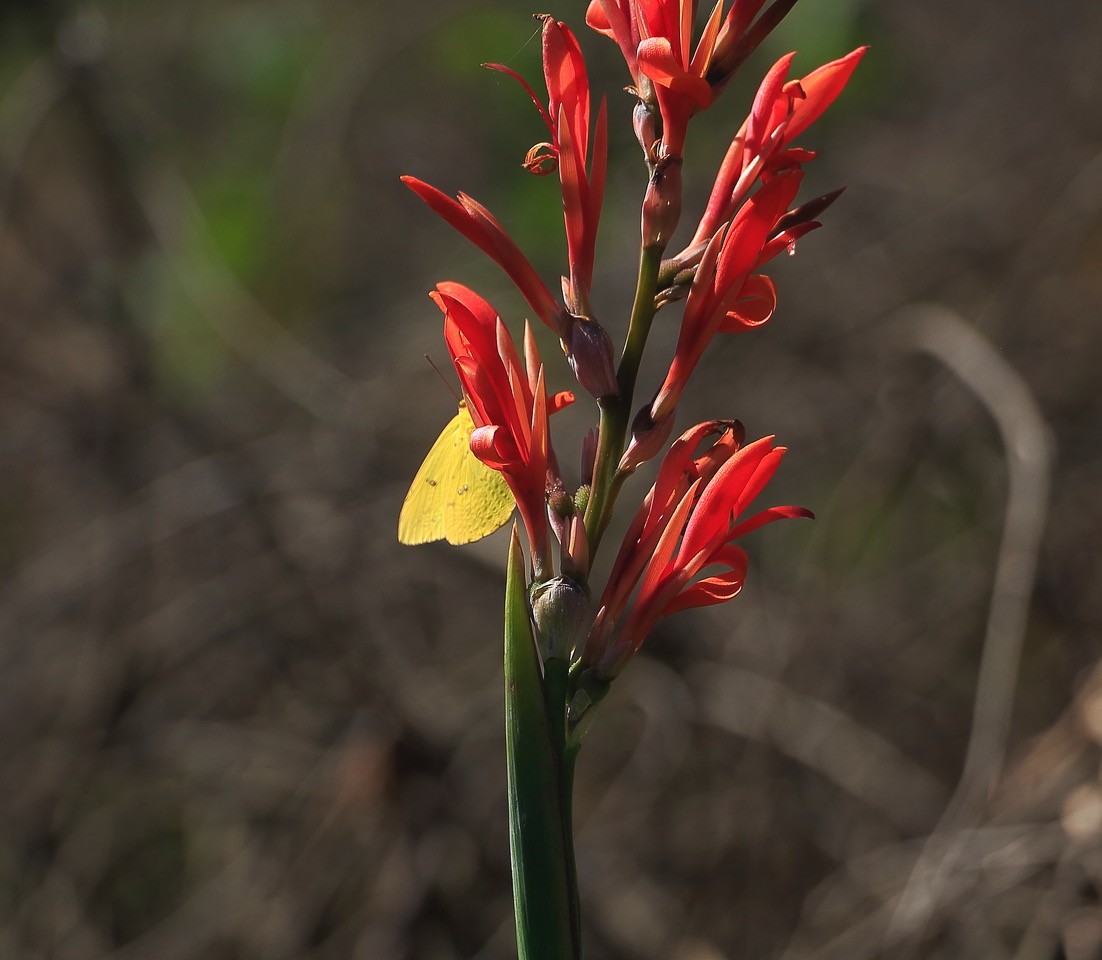Elusive Butterfly Of Fall
November 4, 2021By Tom Poland
December 1965, that’s when a catchy tune debuted. Bob Lind’s “Elusive Butterfly” used a butterfly as a metaphor for love. Some of you survivors of these modern times might remember Lind’s line, “I chase the bright elusive butterfly of love.” Well, I chase the elusive cloudless sulphur butterfly.
Among my autumn signposts are ripened wild grapes, colors of football jerseys and flags, falling leaves, and a golden butterfly fluttering across highways as I make my way to games, back roads, and family.
That golden butterfly I see that seems to never land? It’s the cloudless sulphur butterfly, Phoebis sennae, as naturalists know it. Its genus name comes from the name of the Greek god Apollo’s sister, Phoebe. I’ve tried to photograph this golden goddess, but it’s one of those butterflies that never stays in one spot long, a transient like some house-flipping investor or culprit on the lam. Well, all that sounds a tad negative, so let’s just say the cloudless, as I’ll call it, is busy sharing its beauty on a nonstop tour to the south.

Each fall as I drive east to west, I look for these beauties, and they never let me down. Here comes one fluttering, dipping, and darting across my path. I take care not to hit it. These golden flashes of light are on a mission: they’re migrating. Like monarch butterflies, sulphur butterflies migrate but nowhere as far or in as great of numbers. I see a lot of them, and I read that they’re in no danger these days, a good thing.
During fall, sulphur butterflies abandon their breeding sites up north and like snowbirds weary of snow, bagels, and taxis, travel airy I-95s south to Florida and other southern places. They live down that way until winter gives way to spring. Then they head back north to familiar breeding sites.
On my trips to Georgia, and in particular, Athens, Georgia, I count their numbers until distractions cause me to lose count. I look for those fluttering pale yellow harbingers of autumn, and they never let me down. I check my compass, which I keep handy, and sure enough, they are heading south.
I’ve long tried to photograph one but they flit about, landing on flowers for a nanosecond before they head out. You need to be a butterfly whisperer to calm them down. I got lucky at a place I’ve put in books, the Janet Harrison High Pond Heritage Preserve near Monetta, South Carolina. I stopped by this preserve that might be a Carolina bay in the making on a sunny, warm fall afternoon. The place swarmed with butterflies. That warmed my heart in this day of vanishing bumblebees and dwindling honeybees. My gut tells me too many pesticides are at work these days. Think twice before you reach for that can of spray or box of granules.
Seems to me, observations prove that “cloudless” likes red flowers, and lo and behold research reveals that’s true. Here you see one resting for a few seconds on an old variety of canna lily, an odd species to be in a high pond. Did someone plant these lilies? I looked around and sure enough an old homeplace once stood in the preserve as lilies and old bricks embedded in soil attest.
We look for meanings in nature. To see a yellow butterfly represents joy and creativity. If you see a yellow butterfly flitting about expect some happiness and prosperity. And if you need some exercise, venture forth into nature this time of year with a camera and chase these little gold jewels around. Chase the elusive butterfly of fall and if you’re quick enough, as the song goes, you may catch an image of this lovely migrant headed south.
Visit Tom’s website at www.tompoland.net
Email Tom at [email protected]



















